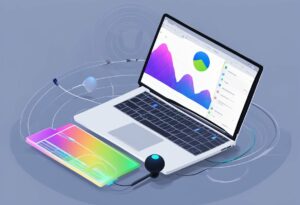A salesperson, in any brick-and-mortar store, is adept at judging if a particular customer has arrived with a genuine intent of buying or not. Appropriately, he approaches him, aligns his pitch with the customer’s persona and ensures a sale.
Ecommerce, the virtual store, is a different ball game.
There are no sales guys and zero face time with the customer. Hence, no scope to study buying signals. However, customers still reveal a lot through their ‘digital’ body language – browsing, clicking, scrolling, filtering, etc.
Identifying a pattern in their behavior, and leveraging it is not an uphill task. In fact, there are some specific kinds of online visitors any ecommerce website usually gets. The infographic below will describe you various visitors that as an ecommerce store you will receive. Plus, their digital body language, their whole journey of shopping.
Courtesy of: Targeting Mantra
1 The Wish Lister
The online avatar of a window shopper
He dedicates considerable time and effort to carefully select items, but leaves without buying anything. Why? Affordability issues. Having an online cart that they don’t have to buy, forever holding their desired items, serves as a consolation for the fact that they cannot buy them, only own them virtually.
How to trigger a purchase: Make it happen with a delightful Surprise discount.
2 The Hesitant Twins
The Underconfident & The Maximizer
They can afford to buy, and would do everything required for a purchase, from account creation to finalizing item specifics, but would take significant time to hit the “checkout” button. Out of their fear of making a bad decision, they second-check all items, even their alternatives. All this due to an abundance of choice.
While a maximizer is focused on making the absolute most out of a product, the underconfident is paralyzed by the fear of a bad decision.
How to trigger a purchase: Do away with such anxiety with positive affirmations and feedback on the customer’s journey, make him feel secure about his decision. Also, limit the number of options for each product.
3 The Passionate Purchaser
Our very own Impulse Bulk buyer
Being a spontaneous bulk buyer, he is the most welcomed soul in any store. All he cares about is staying on the forefront of trends. Filters are not his go-to. He jumps directly to the “what’s hot” category dedicating all his time fondling with the product. Emotional gratification of owning a trendy product is what compels him to buy. Colors and accessories take precedence over functionality.
How to trigger a purchase: Tap on the factor of “emotional gratification” by displaying captivating large product images and hiding any (interfering) details under tabs.
4 The Busy Twins
The Rational Visitor & The Satisficer
They are the ones who would “exploit” your filters to drill down options leaving only those that best meet their criteria. The remaining ones are then “cost-benefit” analyzed to make an “informed” decision. Scrolling, browsing, etc. are all activities that waste their precious time.
Out of these two, it is the Satisficer who is more chilled out but simultaneously more time-crunched, and hence, picks the first item that meets his criteria and buys it instantly. The other twin, however, devotes more time in analyzing all available options.
How to trigger a purchase: Support their decision making in the right way. Strengthen filters and get creative with product listings. Segregating items also by mood, utility, or occasion would take you a long way with the twins’ loyalty.
Closing thoughts
Remember, a unique product is sufficient to qualify its visitors. Only those who have the intent of buying it would arrive. But when you are one of many websites selling similar products, a human touch becomes indispensable.
This human touch is customization of results by understanding of psychology and digital body language of the visitor. Arm yourself with such insights next time a visitor arrives at your store.
Special thanks to:
How to Psychologically Segment Customers By Persona Baiting
How to Increase Conversion Rates by Building Customer Personas
http://conversionxl.com/creating-customer-personas-using-data-driven-research/
http://uxmag.com/articles/designing-for-different-online-personality-types



